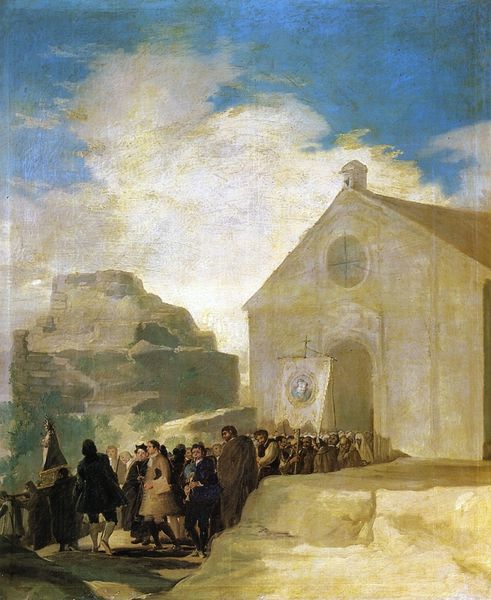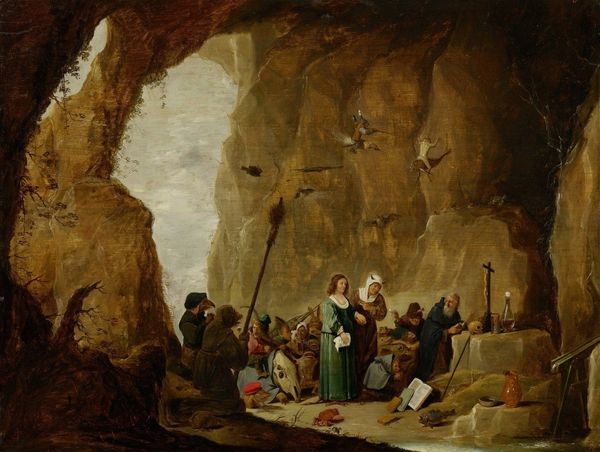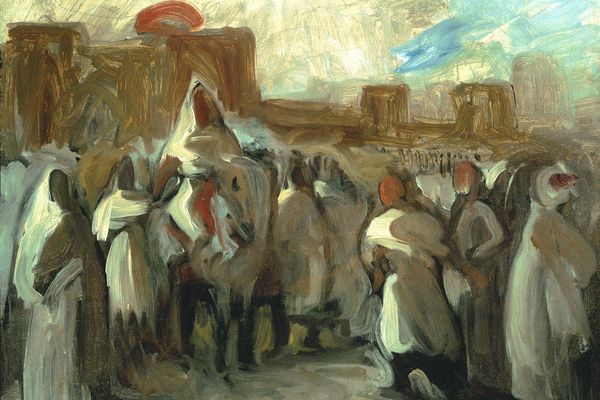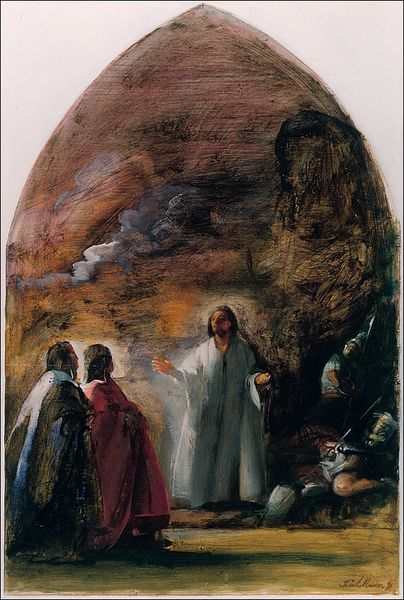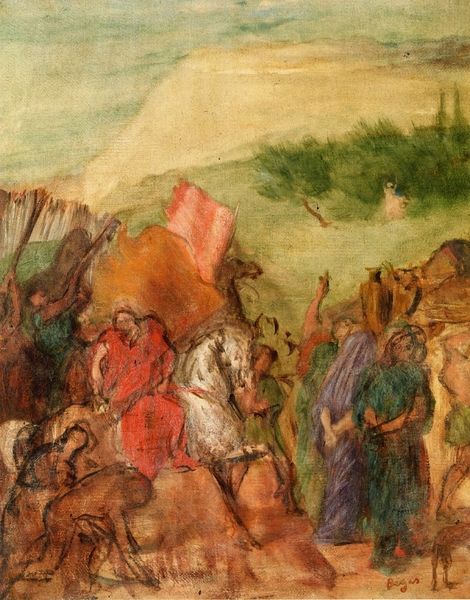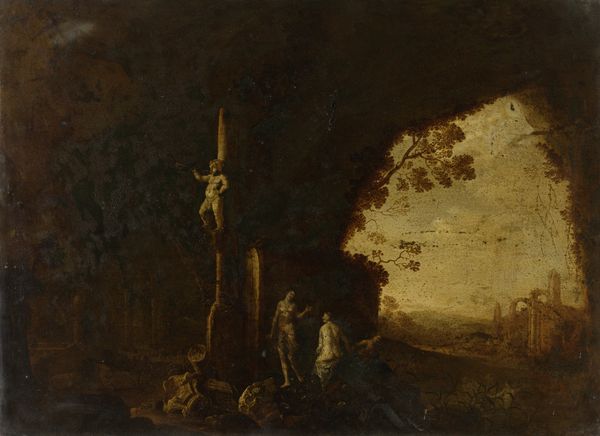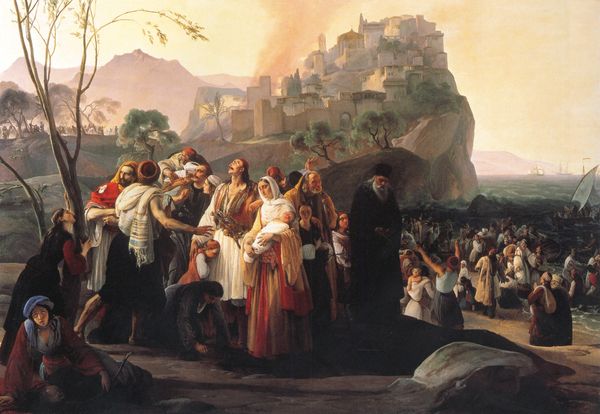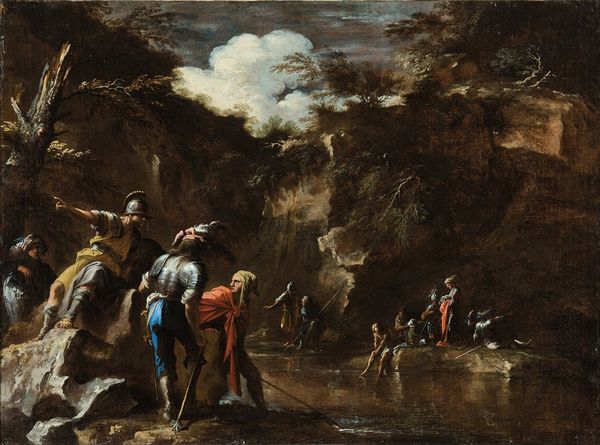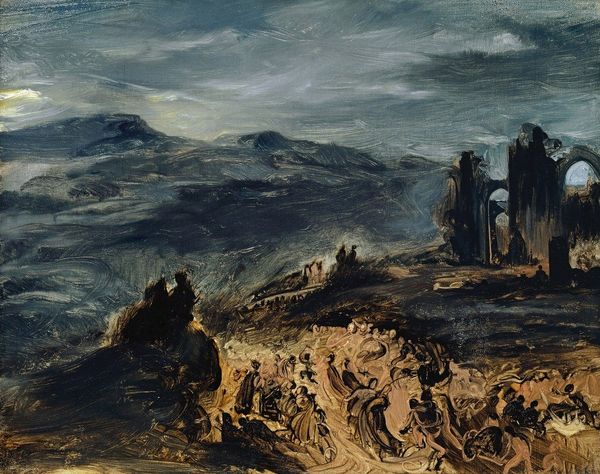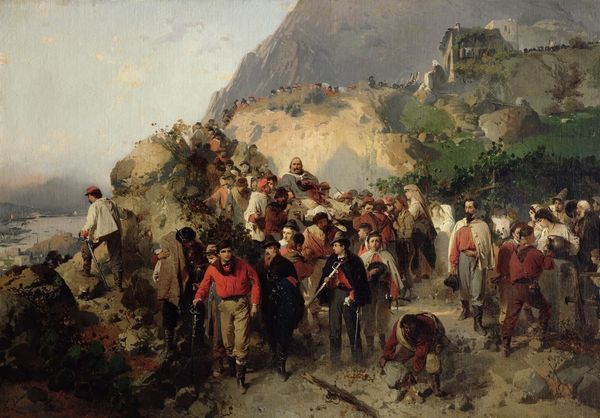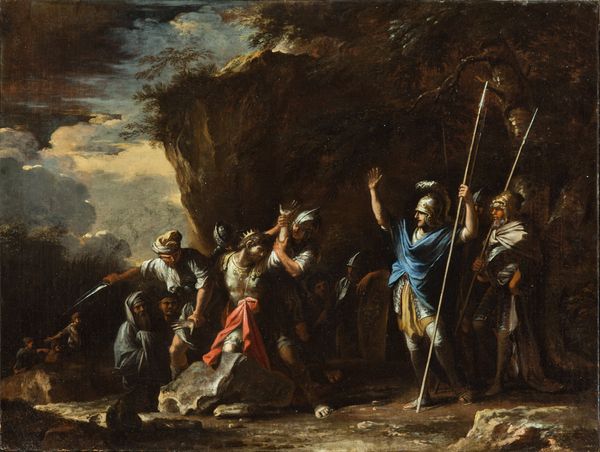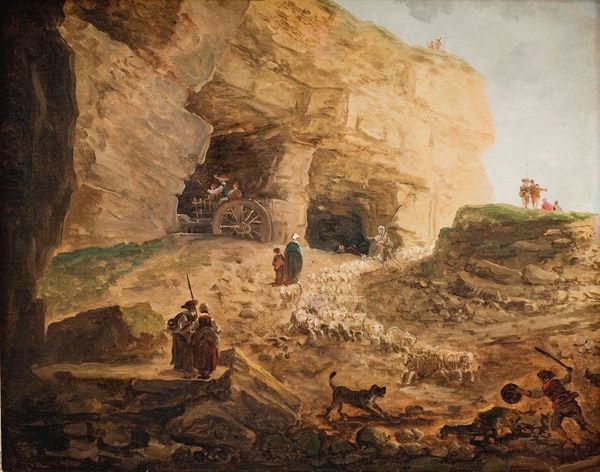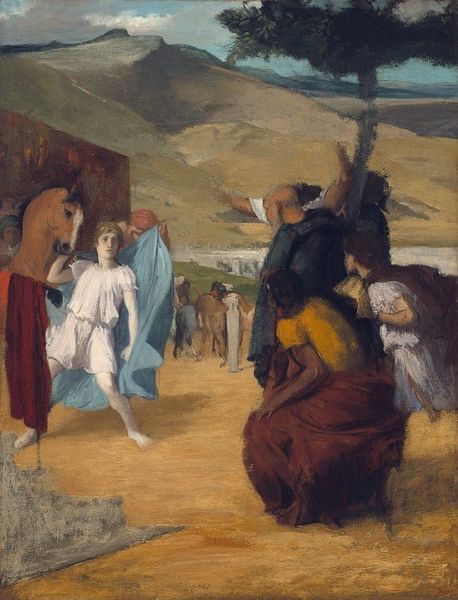
Pilgrimage to the Fountain of San Isidro / The Holy Office 1823
0:00
0:00
franciscodegoya
Museo del Prado, Madrid, Spain
Dimensions: 123 x 266 cm
Copyright: Public domain
Curator: Goya’s "Pilgrimage to the Fountain of San Isidro," also known as "The Holy Office," painted in 1823, presents such a stark, foreboding landscape. The figures seem almost swallowed by the immensity of the terrain. Editor: Yes, there’s a palpable sense of dread evoked here, isn’t there? The material handling—the visible brushstrokes, the heavy impasto—it contributes to the raw emotionality. One can feel the weight of the pigment, reflecting, perhaps, the burdens carried by the depicted populace. Curator: Precisely. Note the stark contrast in the composition. The bright, almost ethereal light on the left juxtaposed with the murky shadows engulfing the throng of pilgrims on the right. It creates a spatial tension, suggesting division, perhaps moral or spiritual. Editor: And those earth tones! The pigments Goya chose, the ochres and umbers, they’re so elemental. Considering the political turmoil of Spain at the time, under the reign of Ferdinand VII, the piece acts as a condemnation of institutional power using faith to manipulate the public through fear, effectively transforming devotion into mass hysteria. We must remember that Goya was commissioned to produce a depiction of rural festivity, and the resulting artwork illustrates something quite opposite to the original scope. Curator: Indeed, the figuration is far from ideal. The faces are grotesque, caricatured. The artist has manipulated form here to generate unease. Those tightly grouped figures convey a sense of claustrophobia, underscoring themes of entrapment. Editor: Right, those visages aren't idealized; the very materiality with which they’re constructed highlights human fallibility and despair. He isn’t celebrating the act of pilgrimage; instead, he highlights the raw cost. Consider also how the quick execution would impact the message in the Romantic era; how unusual the materiality of a landscape scene. Curator: It's a radical departure from academic standards. In many respects, Goya subverts our expectations of how form typically functions. The distortion is key to generating meaning here. Editor: Definitely a piece speaking loudly, via its materiality and representation, on the state of societal anxiety. I now understand how it connects so readily to an expressionist tradition. Curator: Absolutely. Its aesthetic value stems from its compositional choices. It's hard to separate the symbolic content from the striking contrasts. Editor: And that final impression leaves us with much to ponder concerning labor, context, and process and a deeper look into Spain’s social unease at the time.
Comments
No comments
Be the first to comment and join the conversation on the ultimate creative platform.
